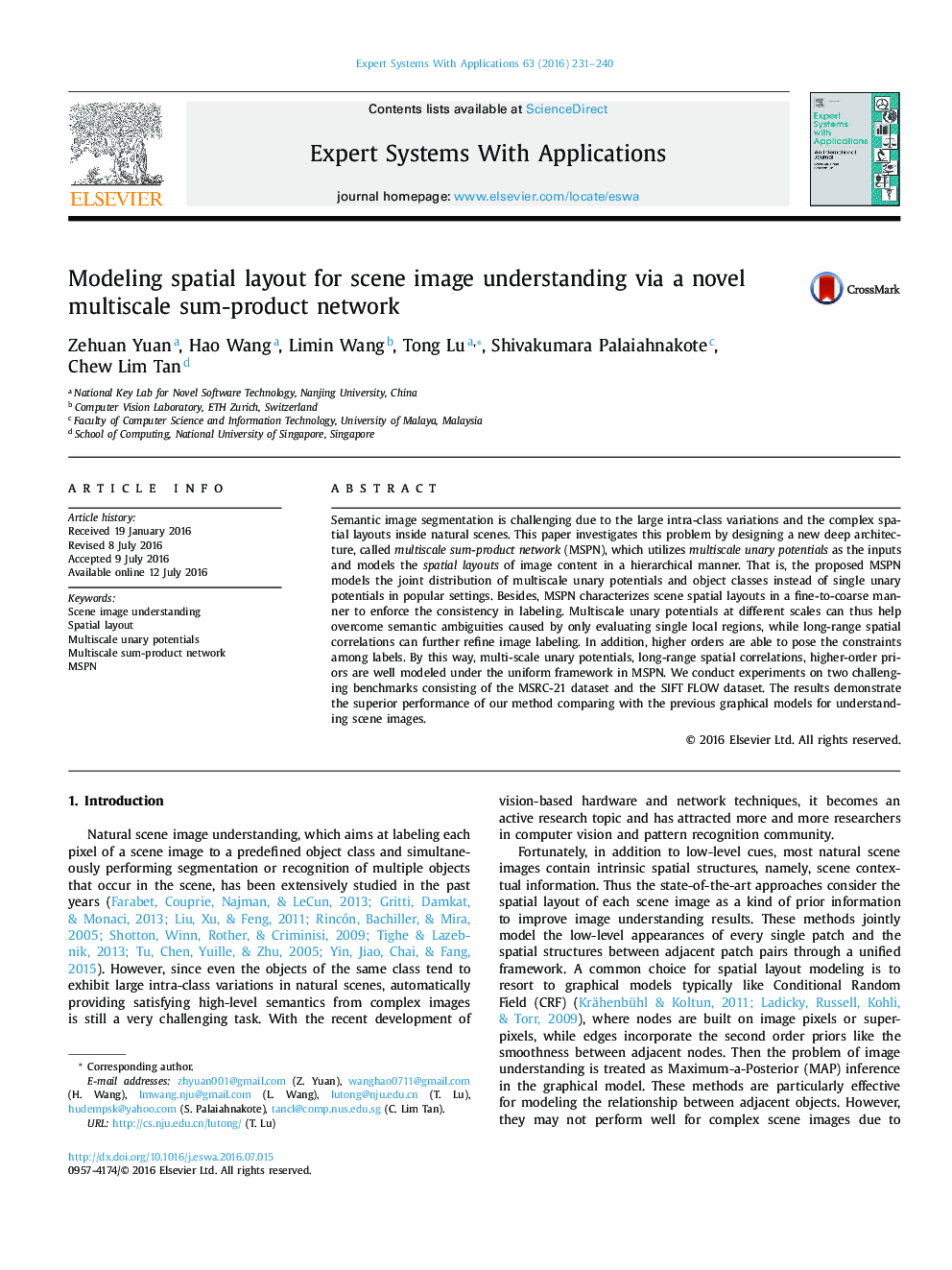| Article ID | Journal | Published Year | Pages | File Type |
|---|---|---|---|---|
| 382989 | Expert Systems with Applications | 2016 | 10 Pages |
•A new deep architecture MSPN is proposed for image segmentation.•Multiscale unary potentials are used to model image spatial layouts.•A superpixel-based refinement method is used to improve the parsing results.
Semantic image segmentation is challenging due to the large intra-class variations and the complex spatial layouts inside natural scenes. This paper investigates this problem by designing a new deep architecture, called multiscale sum-product network (MSPN), which utilizes multiscale unary potentials as the inputs and models the spatial layouts of image content in a hierarchical manner. That is, the proposed MSPN models the joint distribution of multiscale unary potentials and object classes instead of single unary potentials in popular settings. Besides, MSPN characterizes scene spatial layouts in a fine-to-coarse manner to enforce the consistency in labeling. Multiscale unary potentials at different scales can thus help overcome semantic ambiguities caused by only evaluating single local regions, while long-range spatial correlations can further refine image labeling. In addition, higher orders are able to pose the constraints among labels. By this way, multi-scale unary potentials, long-range spatial correlations, higher-order priors are well modeled under the uniform framework in MSPN. We conduct experiments on two challenging benchmarks consisting of the MSRC-21 dataset and the SIFT FLOW dataset. The results demonstrate the superior performance of our method comparing with the previous graphical models for understanding scene images.
